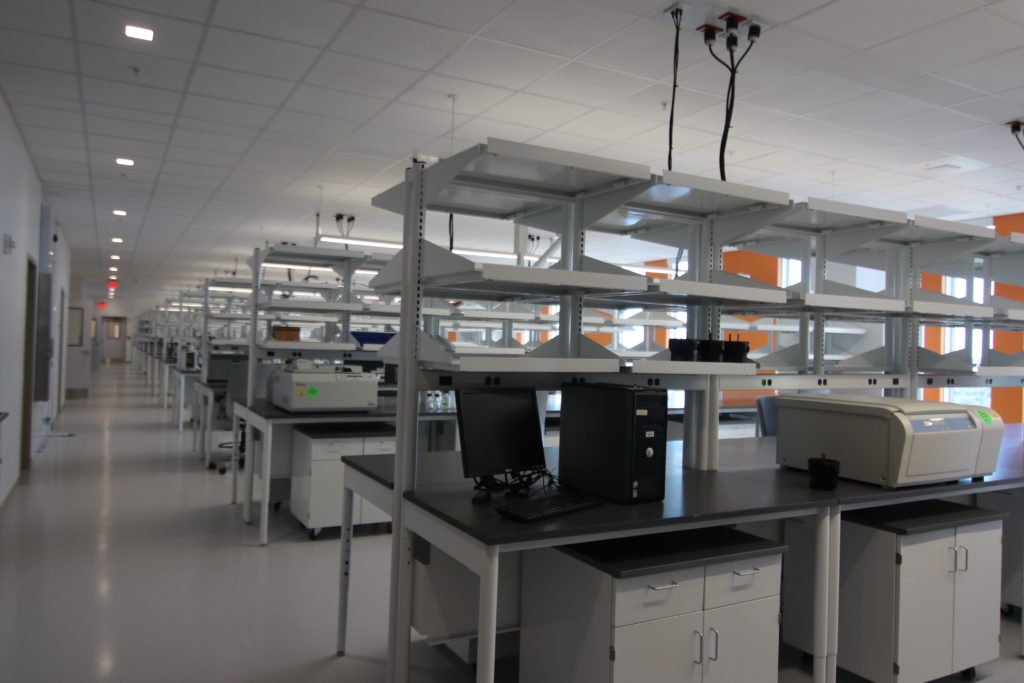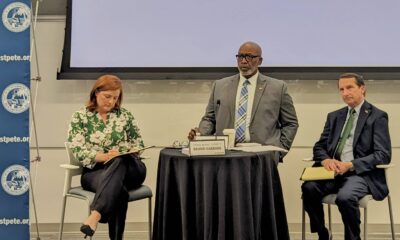Inside the new Johns Hopkins All Children’s Research and Education building

After almost three years and $95 million, the new Johns Hopkins All Children’s Research and Education building opened Thursday.
The 225,000-square-foot, seven-story structure, at 600 5th St. South, across the street from the hospital, is the largest pediatric research and teaching facility in the region.
The building is bringing innovation to the St. Petersburg area, said Dr. Jonathan Ellen, president and vice dean at Johns Hopkins All Children’s Hospital.
It’s in the heart of the Innovation District, a cluster of healthcare, higher education, marine science, media and business incubation institutions. The new building is expected to bring high-power talent and high-wage jobs that St. Petersburg government, civic and business leaders are seeking to attract.
Here are four key areas of focus for the new research and education facility.

Dr. Jen Arnold, John’s Hopkin’s All Children’s Simulation Lab Medical Director performs resuscitation efforts on a simulation model.
Simulation center. At 13,000 square feet and costing about $4.5 million, the simulation center is the largest pediatric simulation center in Florida, said Dr. Paul Danielson, a pediatric surgeon and director of innovation and training at All Children’s.
Simulation centers in hospitals are growing rapidly, as more and more institutions realize their value for patient safety, said Dr. Jen Arnold, medical director of the simulation center.
The All Children’s center has 15 simulation rooms, allowing medical personnel to practice scenarios that could lead to error, using mannequins and technology so they can get feedback and improve their skills. In addition to an operating room and mock patient rooms, there’s also a simulated ambulance bay, elevator and home environment.
In a media preview, Arnold led her team through a simulated birth, showing how a baby born to a high-risk mother could be safely delivered and cared for immediately after birth.

This state of the art Biorepository can hold 3 million biospecimen samples.
Biorepository. The biorepository is essentially a bank for biological specimens such as blood and tissue. It can store up to 3 million biospecimens and uses robotics to gather the samples.
“A lot of diseases that children have are treated in ways that are mainly based on adult evidence, rather than children,” said Dr. Neil Goldenberg, chief research officer. “The goal is to find a marker in the blood that helps us to better understand different subgroups of disease so that we can treat them more precisely in the future.”
There are several layers of redundancy to ensure the freezers stay cold, including a backup generator and the ability to store samples at other facilities, including Johns Hopkins in Baltimore.

Research lab facilities cover the 4th and 5th floors.
Laboratory. There’s 40,000 square feet of lab space throughout the building, and it’s set up so basic scientists will sit next to clinicians, so they can exchange ideas.
“The basic science researchers will present their work to the clinical scientists and there’s going to be lightbulbs going on in their minds, saying that’s going to help me treat a patient someday,” said Tim Osborne, director of the institute for fundamental biomedical research. “It will stimulate the field to move forward, and I’m confident it will lead to better treatment and better health care for society.”
There are two focuses: metabolic diseases such as obesity and diabetes, and RNA biology.
There are six basic scientists now, who have about $5 millions of National Institutes of Health research collectively that they brought with them. Osborne expects to double that in the next few years as the laboratory grows. There’s room for 60 to 80 scientists on each of the two floors the laboratory space occupies.

Just one of the wing of classrooms dedicated to intern and resident teaching.
Medical education. There are 36 residents in the Johns Hopkins All Children’s pediatric residency program. Twelve interns are selected each year from about 1,000 applications. The first class graduated in June 2017, after matriculating in 2014, said Dr. Akshata Hopkins, program director.
The focus is on education. Residents are actively involved in the community, serving at local high schools as part of their adolescent health work, or lobbying in Tallahassee for health care access, for example.
“Our goal is to not only develop astute clinicians, but also to develop physician leaders for the future,” Hopkins said.





